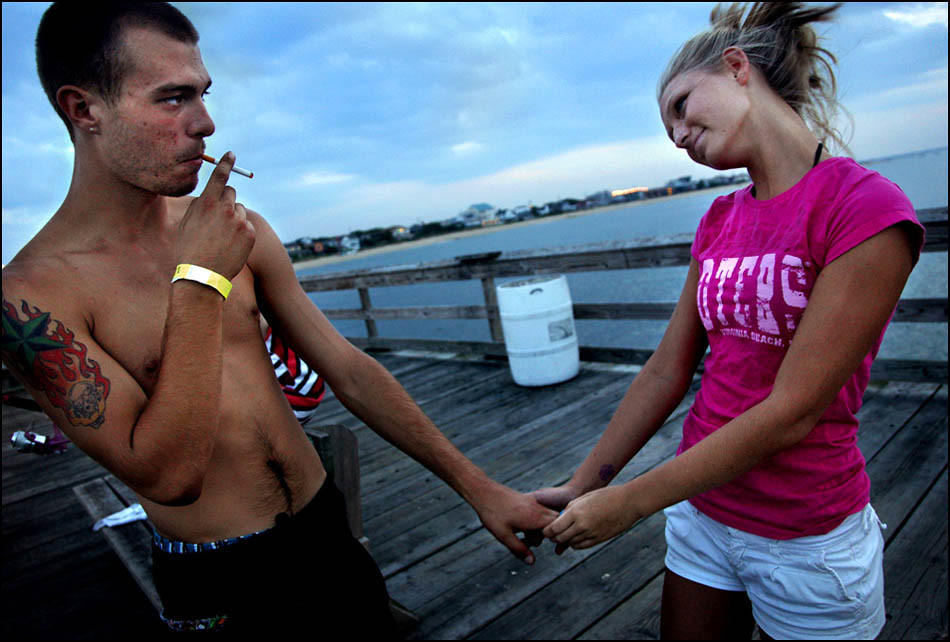
TID:
Preston, thanks for being a part of our discussion.
This image is part of a larger body of work. Can you
tell us what the project is called, and what you're trying
to achieve with it?
PRESTON:
The project is called "Between the Devil and the Deep
Blue Sea," and it's one that began when I moved to
Norfolk two years ago. It's a visual exploration of the
neighborhood I live in, and consists of both personal
work and images I shot for The Virginian-Pilot. The
majority of the images were for a photo column in the
paper. I was really interested in taking on a project that
was more personal, more conceptual, and I wanted an
opportunity to make some pictures in a less
traditional photojournalism way.
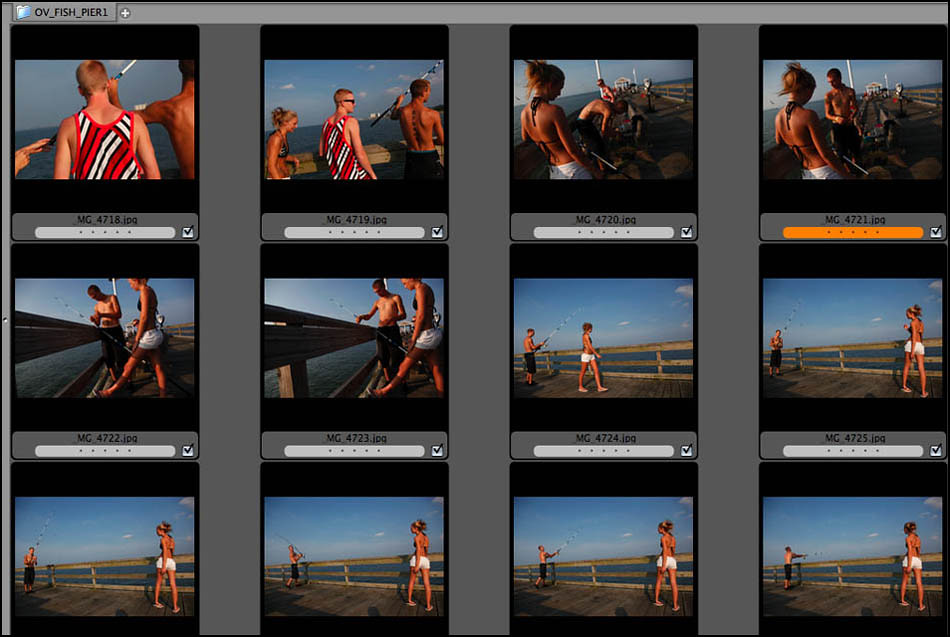
TID:
How did you find this couple and why photograph them?
PRESTON:
I took an afternoon to find a story on the pier.
Recreational and commercial fishing is a big
part of life here, and I knew I'd be able to make
a photo there. You know, it's often hard to
pinpoint exactly what draws you to a particular
subject. It could be someone's face or an action
that draws your attention to them, or just some
subconscious impression that they might make a
picture. There were three people in this particular
group (this couple and a friend tagging along), so
that always adds more possibility for interaction
and moments. The friend was dressed pretty stylishly,
with big sunglasses and a bright striped shirt.
Often with this project, I'd head out hoping to find
a photo that reflects a particular demographic or
theme (The idea of beach romance being one). I really
want the body of work to be as diverse as the
neighborhood itself. But mostly, they just seemed really
open when I approached them and game to the idea of
being photographed.
So I stuck with them.
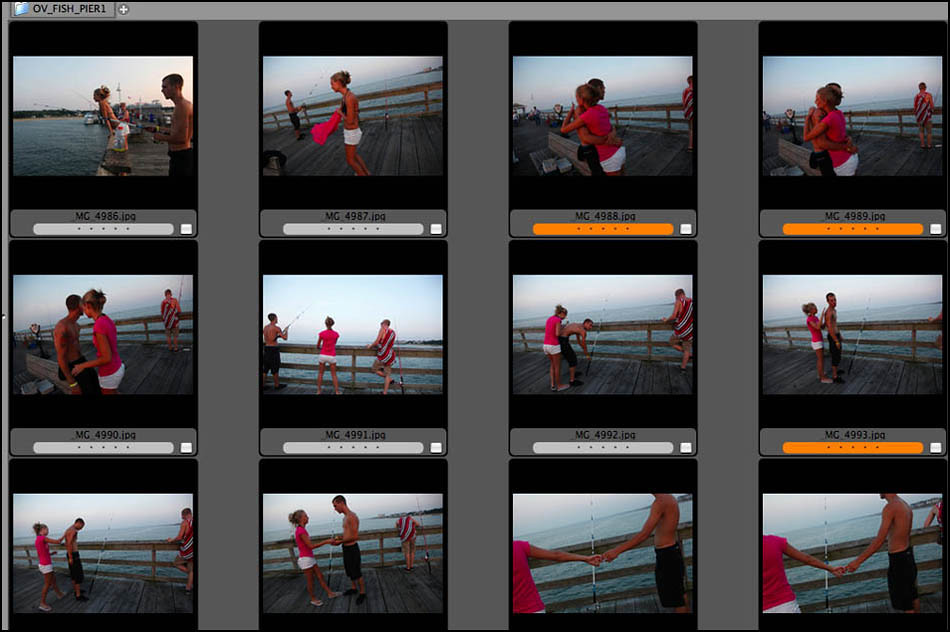
TID:
Can you talk about how this image was made?
PRESTON:
This was at the very end of my time with them, it was
getting dark and they were about to head home. I'd been
shooting for awhile and so I was getting a bit more
comfortable with pushing previous boundaries of intimacy
and physical proximity. It's always a dance trying to
figure out what the subject's comfortable with and how
comfortable they are with having you around. Much more
of my energy and attention goes into reading the subject
and/or the situation than any actual photographic tasks.
So, when you reach that magic point where you don't have
to worry so much about them, the rapport is in place, it's
so amazing. That's when you can really shoot.
TID:
Was there any conflict, or a moment when the couple
didn't want you taking pictures?
PRESTON:
No. They were totally cool. And fun to be with. They
were a bit bashful about the semantics of their
relationship (they weren't "dating," just friends.) But I
think all that comes across in the picture which is
what I like about it. It illustrates that charged moment
of tension and flirting that only happens
at the beginning of a relationship.

TID:
How long did you spend with this couple?
PRESTON:
I spent almost 2 1/2 hours there with them. I think
that's a personal record in terms of time spent with
a stranger I approached out-of-the-blue.
With most of the found situations in Ocean View it was
more like half an hour. And then with the research-
based photos, I would usually do a few different shoots
over a few days. Frankly, it just takes time to make real
documentary photos. Way more time than most people
realize.
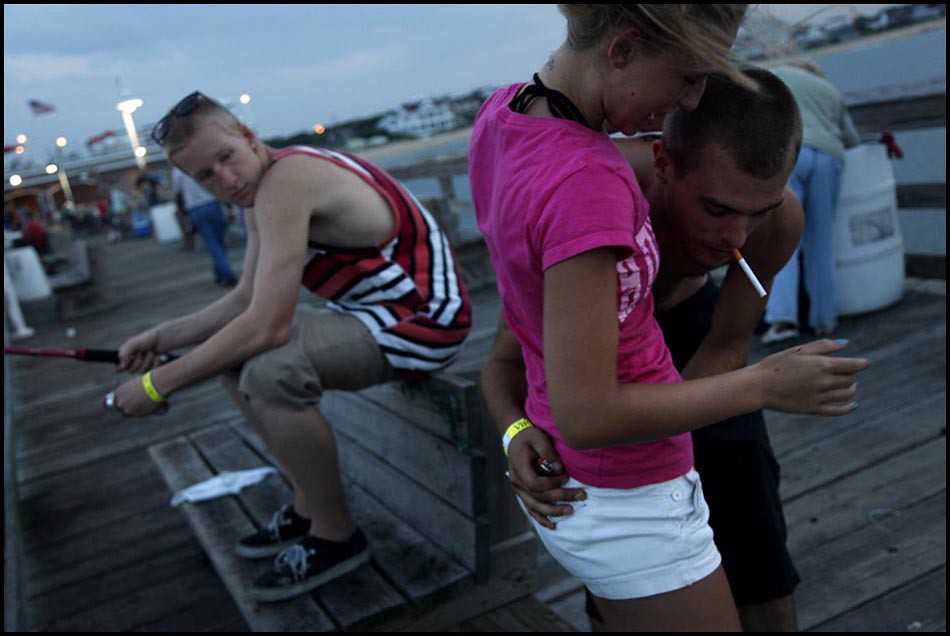
Since these kids were able to put up with me that
long, it simply increased the odds of my making a real
photo. Some situations don't really warrant that kind
of time, if there's not much potential to start. But
these two people obviously had a lot of chemistry.
It had to come out. The longer I was there, the less
physically private they were with each other. I was
just waiting for the moment when they could express
themselves, when they were comfortable with me
photographing it, and when I could do my job of
bringing it together in a single frame.
TID:
What did you learn from the process of making this
image that you didn't know before (or if you didn't
feel you learned anything, what struck you about the
making of this image that was unique?)
PRESTON:
As I mentioned before, it was mostly the time spent with
a subject I found while feature-hunting. And I was surprised
by the intimacy that came out in that process. That's pretty
rare. More often, those moments come after I've spent months
photographing someone. In terms of what I learned, I guess it
just helped build confidence in my work style. With this couple,
and I'd say 90% of the people I shoot, they respond to someone
who's real and genuine.
If I'm at ease, they're at ease.
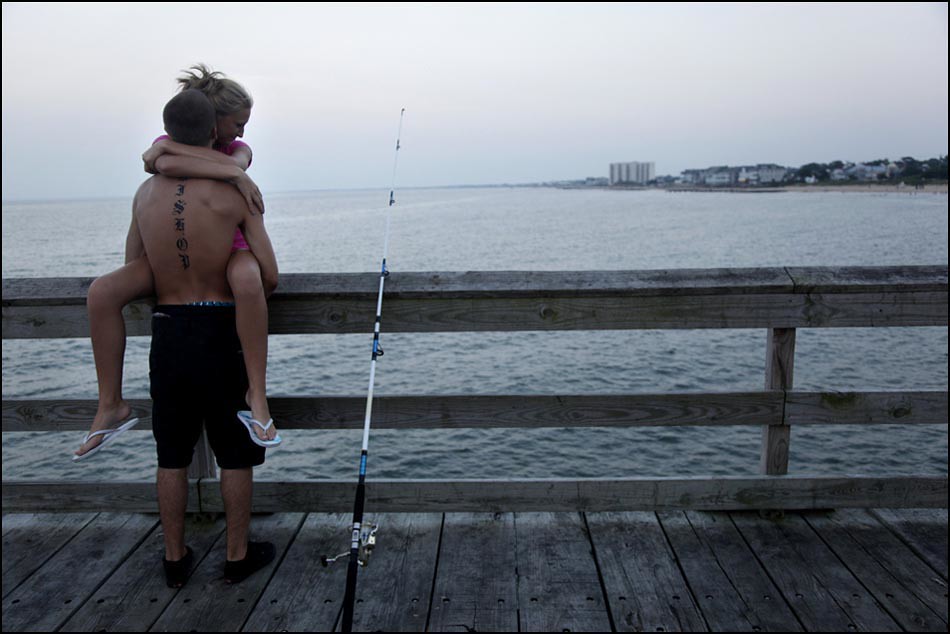
TID:
Preston, one of the things I admire about you is your
temperament and your approach to people you photograph.
For those who don't know you, can you talk about your mental
approach to documentary work in general terms?
PRESTON:
Thanks. When I was working early on at the Concord Monitor,
Dan Habib once told me that the subject has to want to have
you around. That might sound obvious to some, but it sorta
opened a whole window to me on how I needed to approach
subjects differently. Prior to that, I always thought, "Okay. I'm
going to be boring. I'm a fly on the wall. People need to pretend
that I'm not here." And that just wasn't working for me.
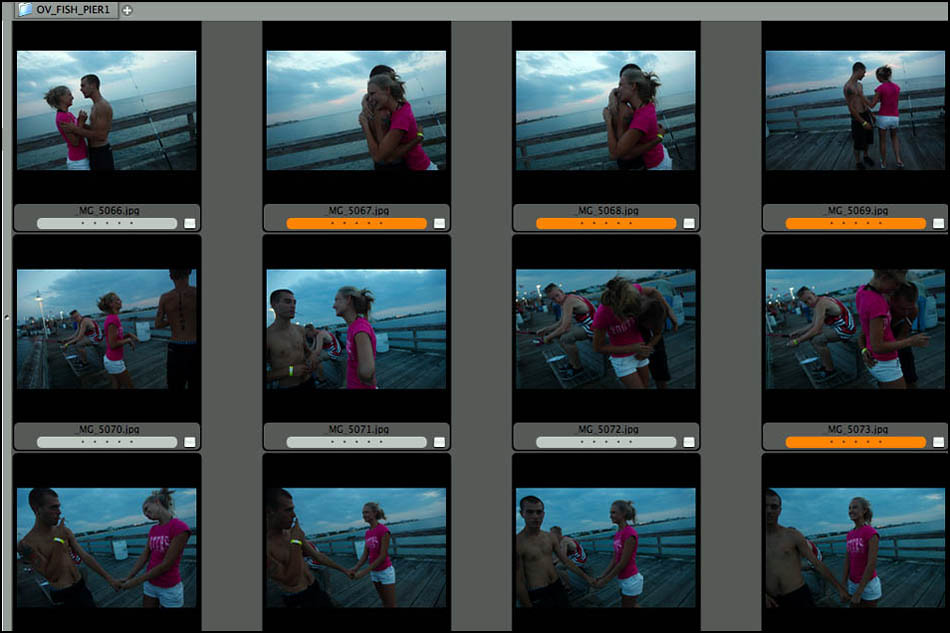
I've really found that building rapport and trust is a two-way
street. I've always been a pretty shy and quiet person. Now I
force myself to talk to people more than I'd be inclined to naturally.
Plus, I realized that you really can look creepy silently following
people around with a camera.
If I were to really pick it apart, I think I try to exaggerate what I have
in common with the subject, to put us on equal footing. Luckily, I'm
physically very non-intimidating. I also slow down and act very casually.
No sudden movements. That keeps people from getting nervous.
I find that people who are calm are just plain easier to have around.

TID:
Thanks a lot Preston. Before we go, I'd like to ask one more
question. Since this image is part of a largely self-assigned
project - do you have any advice for photographers looking
to work on self-generated projects?
PRESTON:
Yeah. You have to be totally committed to it. Documentary
work doesn't affect the bottom line. So it can be very difficult
to get people to put resources behind it. I hope that eventually
changes, but right now it's just part of the reality. You have to
find a way to work on it and then find ways to get it out to an
audience. I'm really lucky that my editors at The Pilot give me
time to work on it and publish so much of it. On the flip side,
having mental ownership over a project is so great. I push
myself so much harder. And I can only shoot when the light is
nice, if I want. Thanks for having me!
++++
Preston Gannaway has worked as a documentary newspaper
photographer for the past 10 years. She currently works for
The Virginian-Pilot in Norfolk, Va. Prior to that, she spent a year
on staff at the Rocky Mountain News before its closure in 2009,
and worked for the Concord Monitor in New Hampshire (2003-2008).
Gannaway's documentary story on the St. Pierre family, Remember Me,
was awarded the 2008 Pulitzer Prize for feature photography.
You can view her work at:
http://prestongannaway.com/
+++++
Next week on TID, we'll take a break from documentary images
and discuss the fun and challenges of doing illustrative work on
short notices and small budgets.
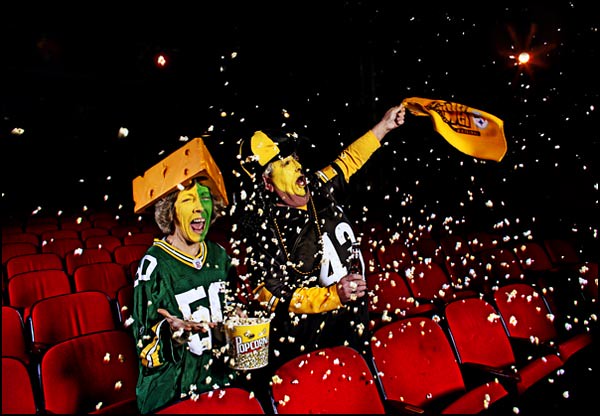
As always, if you have a suggestion of someone, or an image you
want to know more about, contact Ross Taylor at: ross_taylor@hotmail.com.
For FAQ about the blog see here:
http://imagedeconstructedfaq.blogspot.com/

really awesome post.
ReplyDeletei love seeing all the photos leading up to The shot. very interesting.
thank you both!
Preston, the advice Dan gave you was spot-on. It took me 25 years in this business to figure that out.
ReplyDeleteAll of you - this is a great teaching tool, to see the 'contact sheet' with Preston's words.